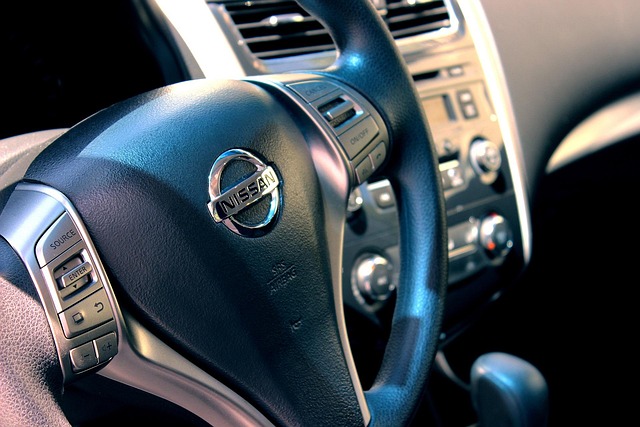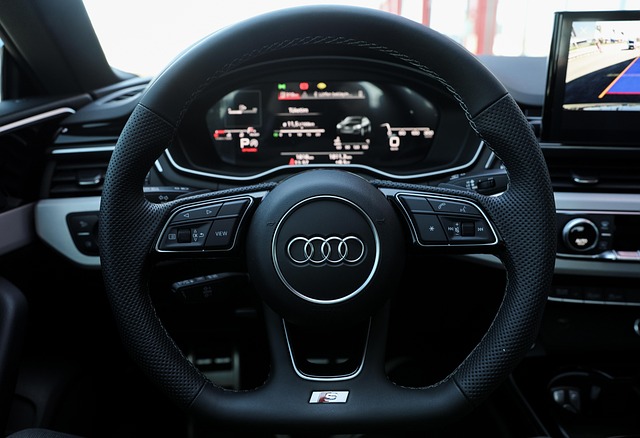Looking to register your car in California? This comprehensive guide walks you through every step, from understanding crucial requirements to choosing the right registration method. We’ll highlight essential documents needed, emphasize the importance of accurately verifying your Vehicle Identification Number (VIN) using a reliable VIN verifier, and provide expert tips for a smooth process. Ensure compliance and hit the road with peace of mind!
- Understand California Car Registration Requirements
- Gather Necessary Documents for Registration
- Verify Vehicle Identification Number (VIN) Accurately
- Choose a Suitable Registration Method in California
- Submit Application and Pay Fees Successfully
Understand California Car Registration Requirements

Before diving into the registration process, it’s crucial to understand California’s car registration requirements. This includes ensuring your vehicle meets safety and environmental standards set by the state. One key aspect is verifying the Vehicle Identification Number (VIN). In California, a VIN verifier is used to cross-check the vehicle’s history and ensure it’s not stolen or has any outstanding issues.
A mobile VIN verifier or mobile vin inspection service can be particularly useful for convenience. These services allow you to complete the VIN verification process from the comfort of your home or even while you’re at a registration center. By having your VIN inspected in advance, you can streamline the registration process and avoid potential delays or complications later on.
Gather Necessary Documents for Registration

Before you begin the registration process, ensure you have all the required documents ready. In California, the key paperwork includes your vehicle’s registration application (form DV306), a completed odometer reading form (if applicable), and proof of insurance. It’s also crucial to present the Vehicle Identification Number (VIN) verifier details, which can be obtained from a mobile VIN verifier or through a VIN inspection. This unique 17-character code is essential for identifying your vehicle.
Additionally, you’ll need personal identification documents such as a driver’s license or state-issued ID card, along with any relevant tax forms or fees required by the California Department of Motor Vehicles (DMV). Having these documents readily available will streamline the registration process and help avoid any delays.
Verify Vehicle Identification Number (VIN) Accurately

Before registering your car in California, it’s crucial to ensure that all vehicle details are accurate, and one of the most important steps is verifying the Vehicle Identification Number (VIN). This unique code is a critical piece of information that identifies your car’s make, model, year, and other specifications. A reliable vin verifier, whether it’s a mobile vin verifier or an in-person inspection, can help ensure this number matches the vehicle you have.
Using a mobile vin verification service is convenient; these services allow you to quickly check the VIN against official databases. Alternatively, you can conduct a manual inspection with a mobile vin inspector who has the necessary tools to cross-reference and confirm the vehicle’s identity. This step is essential to prevent errors in registration and ensure your car’s records are accurate from the start.
Choose a Suitable Registration Method in California

In California, there are several methods to register your vehicle, each with its own advantages. The first step is to ensure your car meets all safety and emission standards through a valid vin inspection. One popular option is to use a mobile vin verifier, which allows you to complete the process from the comfort of your home or office. This method is particularly convenient for busy individuals who may not have the time to visit a DMV location.
Alternatively, traditional registration at a DMV office remains an option. This approach involves submitting necessary documents and passing a vehicle inspection. Using a vin verifier service can facilitate this process by providing proof of vin (vehicle identification number) integrity and ensuring all records are in order. Regardless of the chosen method, having your car’s vin verified is crucial to ensure a smooth registration experience.
Submit Application and Pay Fees Successfully

After preparing your vehicle’s documentation and gathering all necessary information, it’s time to submit your application. You’ll need to complete the California Vehicle Registration Application form, available online or at a DMV office. Double-check that all details are accurate, especially the unique identifier, known as the Vehicle Identification Number (VIN). A VIN verifier can be instrumental here, ensuring the data matches precisely with the vehicle’s specifications. This step involves paying the required fees, which vary based on your vehicle type and other factors.
When submitting your application, ensure you follow the instructions carefully. You may opt for various payment methods, typically including credit card or check. After successful submission and fee payment, you’ll receive your registration certificate, which confirms that your car is legally registered in California. Additionally, consider the option of a mobile VIN verification or inspection for convenience and peace of mind.
Registering a car in California involves understanding specific requirements, gathering essential documents, accurately verifying the Vehicle Identification Number (VIN) using a reliable VIN verifier, and selecting an appropriate registration method. By following these steps and ensuring all fees are paid, you’ll successfully complete the process, making your vehicle legal on California roads.
